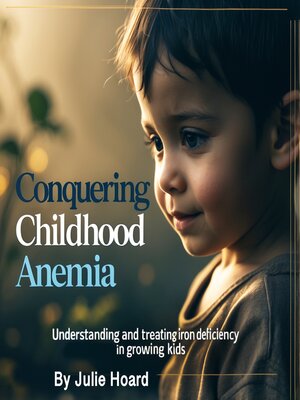Conquering Childhood Anemia
audiobook (Unabridged) ∣ Understanding and Treating Iron Deficiency in Growing Kids
By Julie Hoard

Sign up to save your library
With an OverDrive account, you can save your favorite libraries for at-a-glance information about availability. Find out more about OverDrive accounts.
Find this title in Libby, the library reading app by OverDrive.



Search for a digital library with this title
Title found at these libraries:
| Library Name | Distance |
|---|---|
| Loading... |
Anemia is one of the most common nutritional deficiencies affecting children worldwide, and among its various forms, iron deficiency anemia stands out as the most prevalent. Understanding what anemia is and how it impacts a child's growth and development is the first step in effectively addressing and managing it.
At its core, anemia is a condition in which the body doesn't have enough healthy red blood cells or hemoglobin to carry adequate oxygen to the body's tissues. Hemoglobin is an essential protein in red blood cells that binds to oxygen and transports it from the lungs to the rest of the body. When iron levels are too low, the body cannot produce enough hemoglobin, leading to symptoms such as fatigue, weakness, irritability, and a noticeable decline in energy and attention span. In children, these symptoms can have a serious impact on their physical and cognitive development.
Iron plays a crucial role in a child's growth. Beyond its function in making hemoglobin, iron is also necessary for brain development, muscle function, and the production of certain hormones. In growing kids, especially during periods of rapid development like infancy and adolescence, the demand for iron increases significantly. When this demand isn't met through diet or supplementation, iron stores in the body begin to deplete, resulting in iron deficiency anemia. This is why children are particularly vulnerable during these critical windows of growth.







